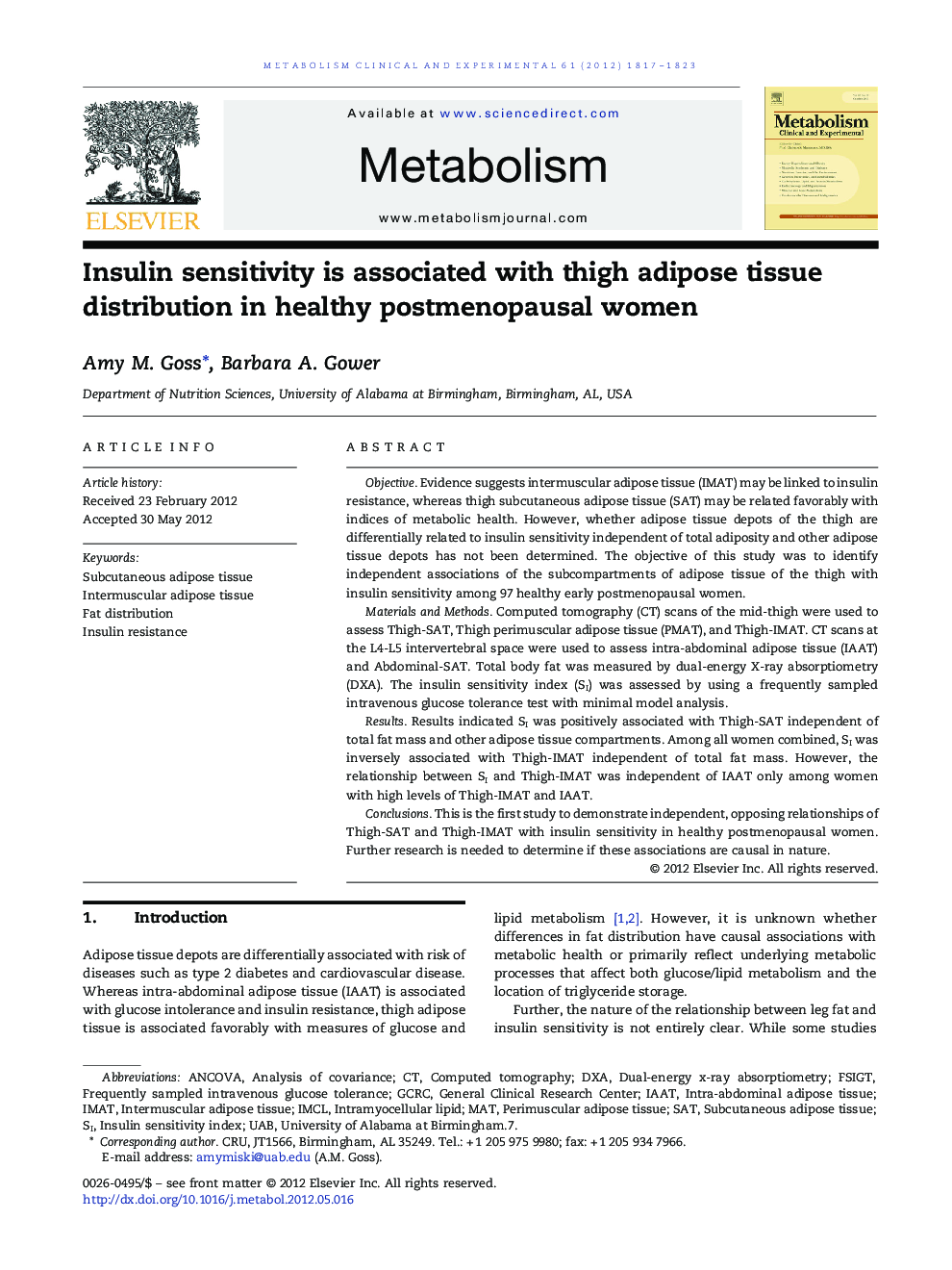| Article ID | Journal | Published Year | Pages | File Type |
|---|---|---|---|---|
| 5903620 | Metabolism | 2012 | 7 Pages |
ObjectiveEvidence suggests intermuscular adipose tissue (IMAT) may be linked to insulin resistance, whereas thigh subcutaneous adipose tissue (SAT) may be related favorably with indices of metabolic health. However, whether adipose tissue depots of the thigh are differentially related to insulin sensitivity independent of total adiposity and other adipose tissue depots has not been determined. The objective of this study was to identify independent associations of the subcompartments of adipose tissue of the thigh with insulin sensitivity among 97 healthy early postmenopausal women.Materials and MethodsComputed tomography (CT) scans of the mid-thigh were used to assess Thigh-SAT, Thigh perimuscular adipose tissue (PMAT), and Thigh-IMAT. CT scans at the L4-L5 intervertebral space were used to assess intra-abdominal adipose tissue (IAAT) and Abdominal-SAT. Total body fat was measured by dual-energy X-ray absorptiometry (DXA). The insulin sensitivity index (SI) was assessed by using a frequently sampled intravenous glucose tolerance test with minimal model analysis.ResultsResults indicated SI was positively associated with Thigh-SAT independent of total fat mass and other adipose tissue compartments. Among all women combined, SI was inversely associated with Thigh-IMAT independent of total fat mass. However, the relationship between SI and Thigh-IMAT was independent of IAAT only among women with high levels of Thigh-IMAT and IAAT.ConclusionsThis is the first study to demonstrate independent, opposing relationships of Thigh-SAT and Thigh-IMAT with insulin sensitivity in healthy postmenopausal women. Further research is needed to determine if these associations are causal in nature.
